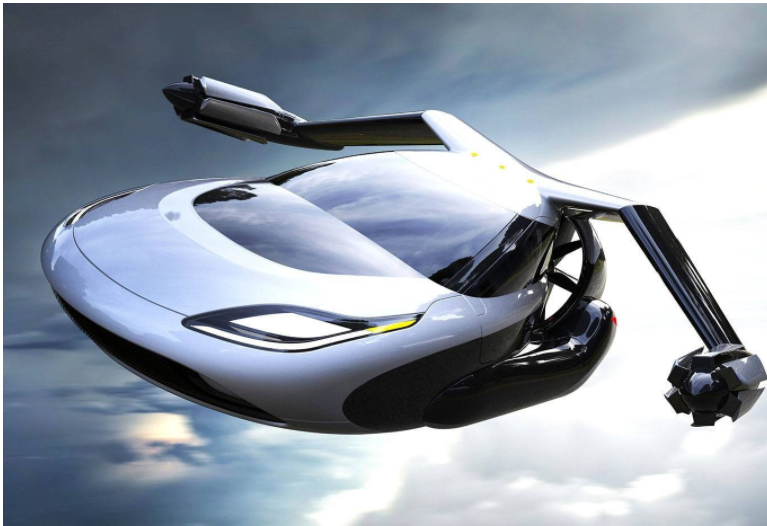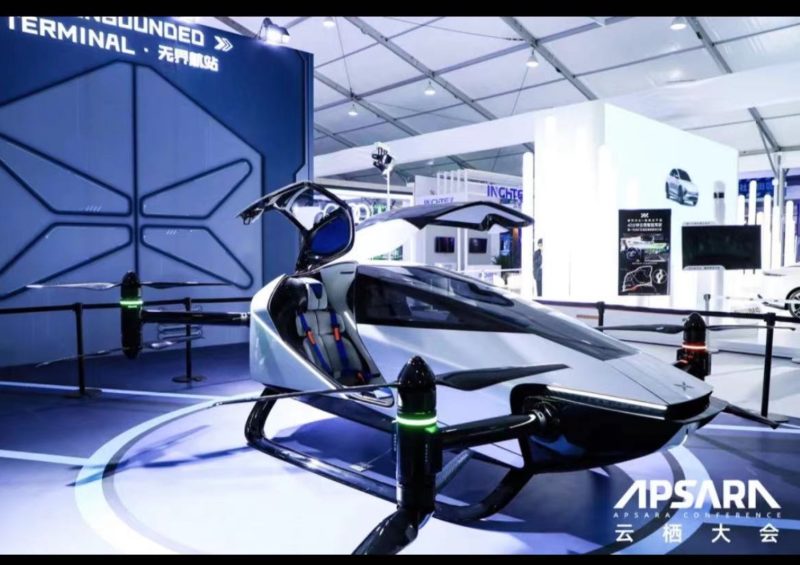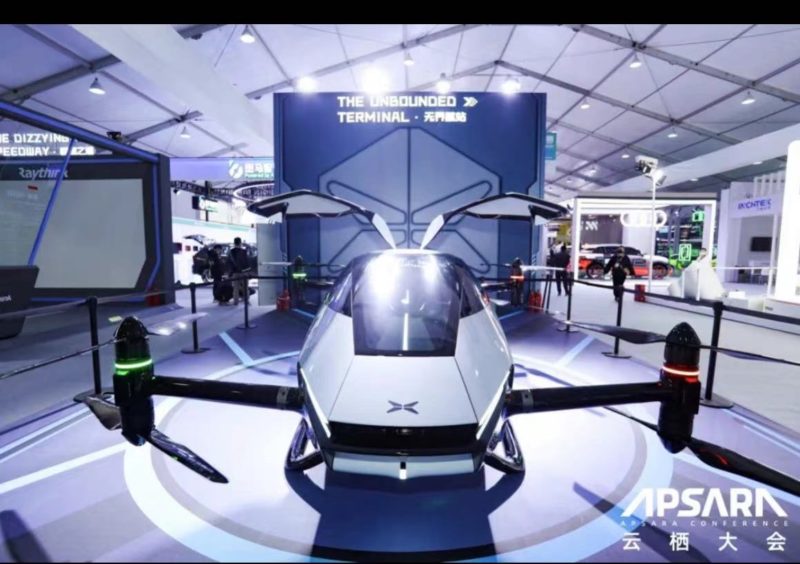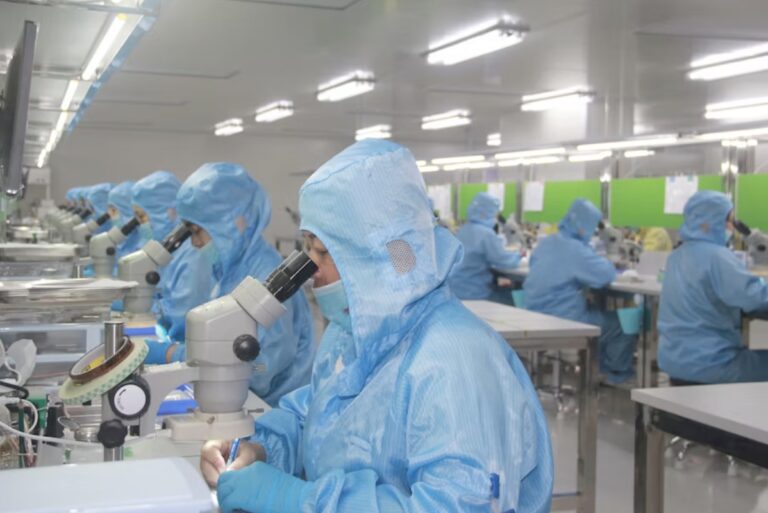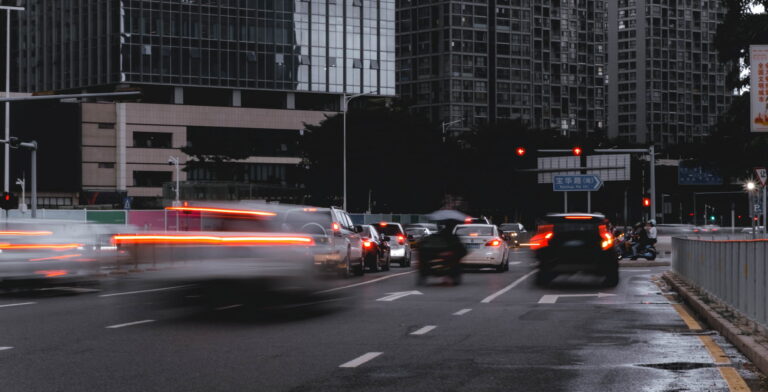Ever since the ancient times, Chinese people have always fantasized about driving in the sky. Imaginary depictions of air-crafts that could take off and land vertically in massive rural regions appeared in a famous Chinese mythological novel ‘Classic of Mountains and Seas’ (山海经) written from more than two thousand years ago. Today, this myth doesn’t seem to be far from reality anymore. Although flying cars in China have not been rolled out for commercial use yet, many companies have developed outstanding conceptual models which some models are already adopted on a small scale for some special purposes, such as the EHang 216 which served as an ambulance during the coronavirus crisis.
Xpeng reveals the Traveler X2
Xpeng (小鹏汇天), one of the leading flying car manufacturers in China, recently unveiled their latest flying car concept – the Traveler X2 (旅航者二号), and vividly explained its usage and functions. Its convenience, technology sophistication, as well as market potential have caught the eyes of potential investors from all over the world, convincing many to believe that China’s flying car market is going to burgeon in the upcoming years.
The Traveler X2, a brand new flying car concept, made a grand appearance on ‘Xpeng’s 1024 Tech Day’, together with a short introductory video clip. As per the video and explanation from Xpeng’s staff members, the Traveler X2 will be able to function both on roads and in the sky, in addition to having a foldable dual rotor mechanism that is convertible from a car to a flying machine. The vehicle will have a steering wheel for driving and a lever for flight. Furthermore, the Traveler X2 will be made up of lightweight materials (carbon fiber) and will include an environmental detection system to ensure safety during the vertical taking off and landing process.
Although the design is far from the final, Xpeng plans to mass-produce and roll out the Traveler X2 by the end of 2024, pricing at less than 1 million RMB, a level affordable at least for rich Chinese people. Flying cars in China will inevitably gain popularity over time. According to CEO He Xiaopeng, around 10%-15% of the population will be traveling regularly with flying cars by 2040.
Source: WeChat, 小鹏汇天
Other flying car models being developed in China
The Traveler X2 is not the only flying car model developed in China and it is not even the only within Xpeng itself. China’s initial effort in crafting flying cars dates back to 1970 amid social turbulence. In spite of the bumpy process up until now, significant progress happened in this area. Several models from numerous firms have already been developed and publicized to the world, all of which possess unique features and characteristics as listed in the table below.
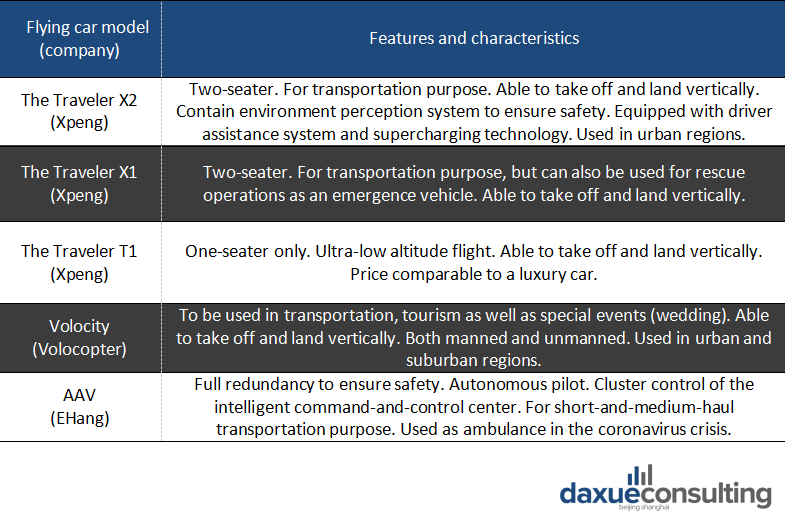
China’s flying car market embodies a bright future
Since the first flying car took off in the US in 2018, the global flying car market has begun to demonstrate a bright future in the eyes of both investors’ and common people’s. Increasing expectation and support are growing for this futuristic market from all over the world, especially in China. For example, Xpeng has secured 500 million USD (roughly 3.2 billion RMB) in a recent financing operation, which is the largest deal for any urban air transport start-up in Asia. It’s worth noting that all participants for this investment are leading investors in China, including Eastern Bell Capital, Sequoia Capital, and Yufeng Capital. Moreover, the local government promised to offer a series of policy support once Xpeng has rolled out the Traveler X2 in Guangzhou in 2024.
We can see this market trend positively reflecting upon the soaring search volume from WeChat users as shown in the graph below. The search volume of ‘Xpeng (小鹏汇天)’ experienced a temporary explosion immediately after every exhibition held or when it gets into the public’s eyes, showcasing the extraordinary amount of attention people give to this invention.

Two essential factors contribute to the bright future of China’s flying car market
Rapid technology progress
The development and emergence of flying cars in China are, to a great extent, attributed to the advancement of new technologies. This includes lightweight material, high-density battery as well as smart technology, among which high-density battery is the most essential element. Flying cars adopt the thermally modulated Lithium-ion Cells, a newly developed high energy-density electric battery, which grants flying cars sufficient power for energy-consuming operations like taking off and staying in the air. According to Chao-Yang Wang, the initial use of such a high-density battery is able to empower a flying car to carry three to four people for 50 miles, to that the distance is only going to increase as the battery develops further.
An ideal solution to urgent big metropolitan problems
With China’s rapid urbanization in the past few decades and rural residents migrating to city areas for work, crucial metropolitan problems are inevitably surfacing and getting increasingly urgent, such as emission, traffic congestion, and inadequate ground infrastructure, just to name a few. Based on the statistical research from Statista, in 2020, Chongqing is among the world’s worst cities in terms of traffic congestion, with an average driver spending 42% of the total travel time idling in traffic jams.
However, urban planners begin to see a ray of hope to solve those issues with the birth of flying cars in China. By making use of the vertical space in the sky, there won’t be as many vehicles vying for the limited space on the ground, thus significantly relieving congestion pressure. What’s more, since we anticipate a freer traffic flow on the ground, there will be less of an urgent need to splurge money on widening roads, expanding car lanes, or building other additional ground infrastructure. On top of that, due to the fact that flying cars are designed to adopt clean energy batteries (such as power), it’s estimated cars’ environmental impacts from emissions will be reduced as well.
Flying cars in China also have disadvantages
As much as flying cars are prospective and can bring large benefits to the future society in China, they contain a series of unignorable disadvantages as well, such as extra pilot-training cost, disruption on current traffic regulations, and energy inefficiency in short distance travel. Listed below are two factors that we should especially take note of based on the comments from Xiaohongshu, a Chinese social platform where people share views on existing and upcoming products.
Noise pollution
Compared to regular road-based cars, it takes a significant amount of energy to keep a flying car airborne, and with this significant amount of energy usually comes with a momentous amount of noise. According to a recent report by INNOVATE, an average flying car produces sounds at 100db in flight (compared to 82db for regular vehicles), which is the same volume as standing 1 meter away from a speaker in the Disco.
What’s worse, the noise is only going to multiply when hundreds of cars fly in the sky together. With cars flying in the sky also suggests that residents will not be able to lessen the impact of noises just by living in high-rise buildings. It is true that companies will unquestionably increment extra funding into noise killing for flying cars in the latter stages of design. However, it is not now a priority in the research agenda, as a result, noise problems will not find solution any time soon.
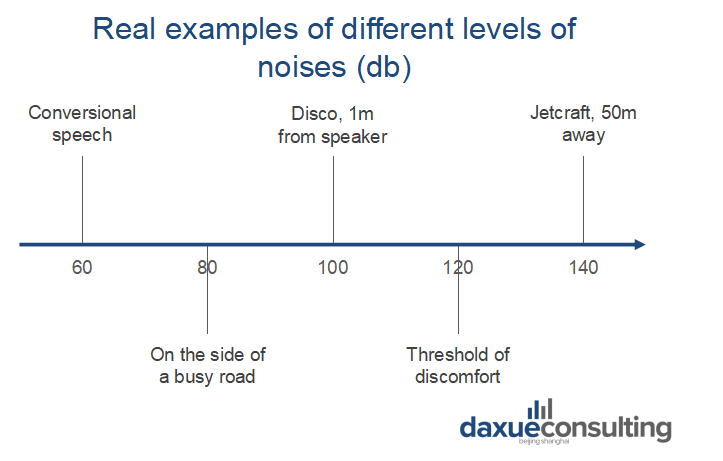
Safety concerns
Safety concerns also rank top when it comes to flying cars’ disadvantages. Flying car is a very light and vulnerable product, meaning the driver has to make sure all components are in perfect condition in order to operate the vehicle properly. However, driving in the sky is never as simple compared to the road with well-established ground infrastructure. It’s likely to crash into birds, have components damaged by poor weather conditions (high wind, hail), and stumble into infrastructures in absence of adequate illumination. One dent on the wings means that you have to spend weeks and hundreds of dollars repairing it. Without proper repairment or maintenance, a huge chance arises with flying cars falling onto the ground mid-flight – damaging properties, causing injuries and even death.
Henceforth, despite the bright aspects and convenience, the disadvantages that flying cars bring to our daily life cannot be overlooked. Companies will have to put the effort into tackling them aforementioned obstacles and adjusting market strategies accordingly before rolling out flying cars in China at full scale.
Author: Jiachen Han


